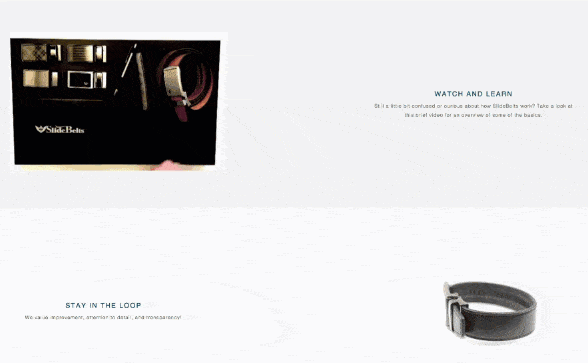The Ultimate Guide to Crowdfunding
chapter
1
You need capital to start a business. How do you get the funds to buy inventory, launch a marketing campaign, and set up shop?
In the last few centuries, businesses have nearly always relied on their immediate networks. Funders may include an uncle, a noble, or a local bank. There are few alternatives for those without a big pile of cash.
Things started to change a few years ago. Entrepreneurs and artists started to receive funding in small amounts from a great number of people often outside of their network. Instead of getting one large loan from a bank officer, entrepreneurs solicit the funding directly from the public, in large part from people whom they do not know. As a result, you may see something like 1000 people giving $30 each instead of a $30,000 loan from a single bank officer.
This is called crowdfunding. Think of it as a “Pennies from Many” model.
Projects are typically funded on crowdfunding platforms. The most popular two are Kickstarter and Indiegogo; smaller platforms include RocketHub, GoFundMe, and Crowdtilt.
Each platform operates sets different rules. Some allow you to keep all the money you raise, while others will only give you the money if your project is fully funded; some are pre-dominantly focused on creative projects and business ideas, while others are more suited for personal ventures.
In short, digestible chapters, this guide helps you to plan out which platform to launch on, create the best campaign page you can, and plan the transition to an enduring business.
First, Bill Trammel of Catan Boards, which raised $361K, over 1400% of its $25K goal to produce designer Catan boards. Second, Mariquel Waingarten of Hickies, which raised $159K, over 600% of its $25K goal to produce specialty laces. Third, NOMAD, which ran successful campaigns on both Indiegogo ($172K of a $50,000 goal) and Kickstarter ($162K of a $50,000 goal). And finally, Canary Home Security: Indiegogo’s most successful funded project with $2 million in pledges.
We hope you find this useful.
In the last few centuries, businesses have nearly always relied on their immediate networks. Funders may include an uncle, a noble, or a local bank. There are few alternatives for those without a big pile of cash.
Things started to change a few years ago. Entrepreneurs and artists started to receive funding in small amounts from a great number of people often outside of their network. Instead of getting one large loan from a bank officer, entrepreneurs solicit the funding directly from the public, in large part from people whom they do not know. As a result, you may see something like 1000 people giving $30 each instead of a $30,000 loan from a single bank officer.
This is called crowdfunding. Think of it as a “Pennies from Many” model.
Projects are typically funded on crowdfunding platforms. The most popular two are Kickstarter and Indiegogo; smaller platforms include RocketHub, GoFundMe, and Crowdtilt.
Each platform operates sets different rules. Some allow you to keep all the money you raise, while others will only give you the money if your project is fully funded; some are pre-dominantly focused on creative projects and business ideas, while others are more suited for personal ventures.
In short, digestible chapters, this guide helps you to plan out which platform to launch on, create the best campaign page you can, and plan the transition to an enduring business.
Crowdfunding for Your Projects, and Interviews with Success Stories
https://www.shopify.com/?ref=qrsgrom
First we discuss the sorts of businesses and products that are particularly suited for crowdfunding. We share case studies of the most successful products launched by crowdfunding, and feature in-depth interviews with four successful businesses to get their insights on how to build a good campaign, how they engage with their audience, and how they’ve kept the momentum going in their business.First, Bill Trammel of Catan Boards, which raised $361K, over 1400% of its $25K goal to produce designer Catan boards. Second, Mariquel Waingarten of Hickies, which raised $159K, over 600% of its $25K goal to produce specialty laces. Third, NOMAD, which ran successful campaigns on both Indiegogo ($172K of a $50,000 goal) and Kickstarter ($162K of a $50,000 goal). And finally, Canary Home Security: Indiegogo’s most successful funded project with $2 million in pledges.
Our Guide to Crowdfunding
https://www.shopify.com/?ref=qrsgrom
Our guide begins with an introduction to crowdfunding, which includes a guide on how to build the foundations for an enduring business. Then it gives an overview of the different platforms, featuring especially Kickstarter and Indiegogo, and compares different platforms in a table. Each of these platforms each have different fees, funding models, and audiences; each platform makes more sense for certain projects more than others.How to Optimize Your Campaign
https://www.shopify.com/?ref=qrsgrom
Crowdfunding is hard, and certainly a great deal requires luck. But there is a science and a method behind most successful projects. We take a purely empirical approach to show you how to optimize your video, landing page, rewards, and the optimal length of time for your campaign. Instead of citing other resources to tell you how to optimize, say, your video, we offer advice directly from Kickstarter and Indiegogo, and present raw data on videos of the most-funded projects from both Kickstarter and Indiegogo.We hope you find this useful.



 Free Bonus
Free Bonus







 Corrine Anestopoulos' in her studio
Corrine Anestopoulos' in her studio  Whether you're starting a brand new business or you're an
established retailer, taking your business online is a fantastic and
exciting growth opportunity. In fact, there has never been a better time
to start an ecommerce business. The internet has connected the world
and tools like Shopify now make it possible for anyone to get started, regardless of technical skill.
Whether you're starting a brand new business or you're an
established retailer, taking your business online is a fantastic and
exciting growth opportunity. In fact, there has never been a better time
to start an ecommerce business. The internet has connected the world
and tools like Shopify now make it possible for anyone to get started, regardless of technical skill.

 Boyer Clutch
Boyer Clutch  Grace Tote
Grace Tote 












